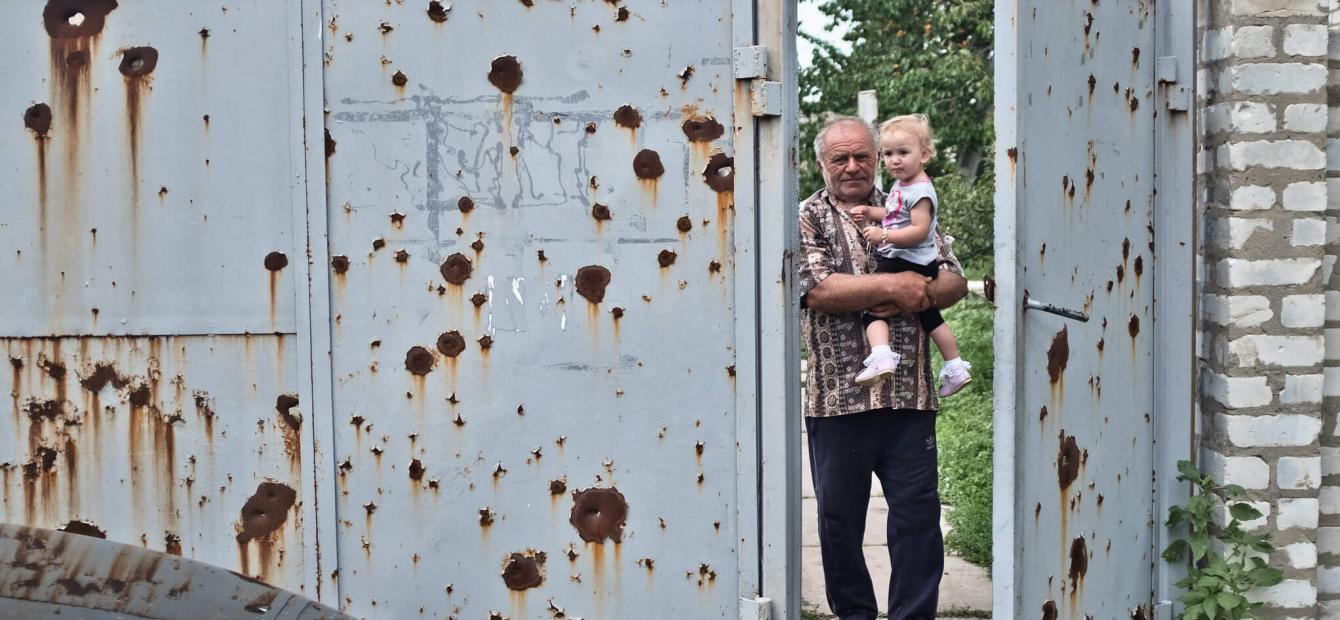
Conflict settlement in Donbas: deadlock in lockdown?
The conflict in eastern Ukraine continues to rage on as it has entered its sixth year. Prospects for settlement of Europe’s only active war seem far-removed, unless the COVID-19 pandemic introduces a diplomatic opening.
Just ahead of Orthodox Easter celebrations, Ukraine and Russian-backed separatists in the east of the country carried out their first prisoner exchange of the year.1 It was the third prisoner exchange overseen by Ukraine’s President Volodymyr Zelensky, who triumphed in last year’s elections on a promise to end the war in Donbas.
Although Zelensky’s approach signals a new phase in Russian-Ukrainian relations, he faces political divisions at home and an East-West geopolitical struggle that makes it unlikely that Moscow will cease its support to the Donetsk and Luhansk ‘People's Republics'.
It therefore seems a tall order for Zelensky to keep his promise of restoring Ukraine’s territorial integrity without jeopardising its sovereignty. Prospects for settlement of Europe’s only active war thus seem far-removed, unless the COVID-19 pandemic introduces a diplomatic opening.
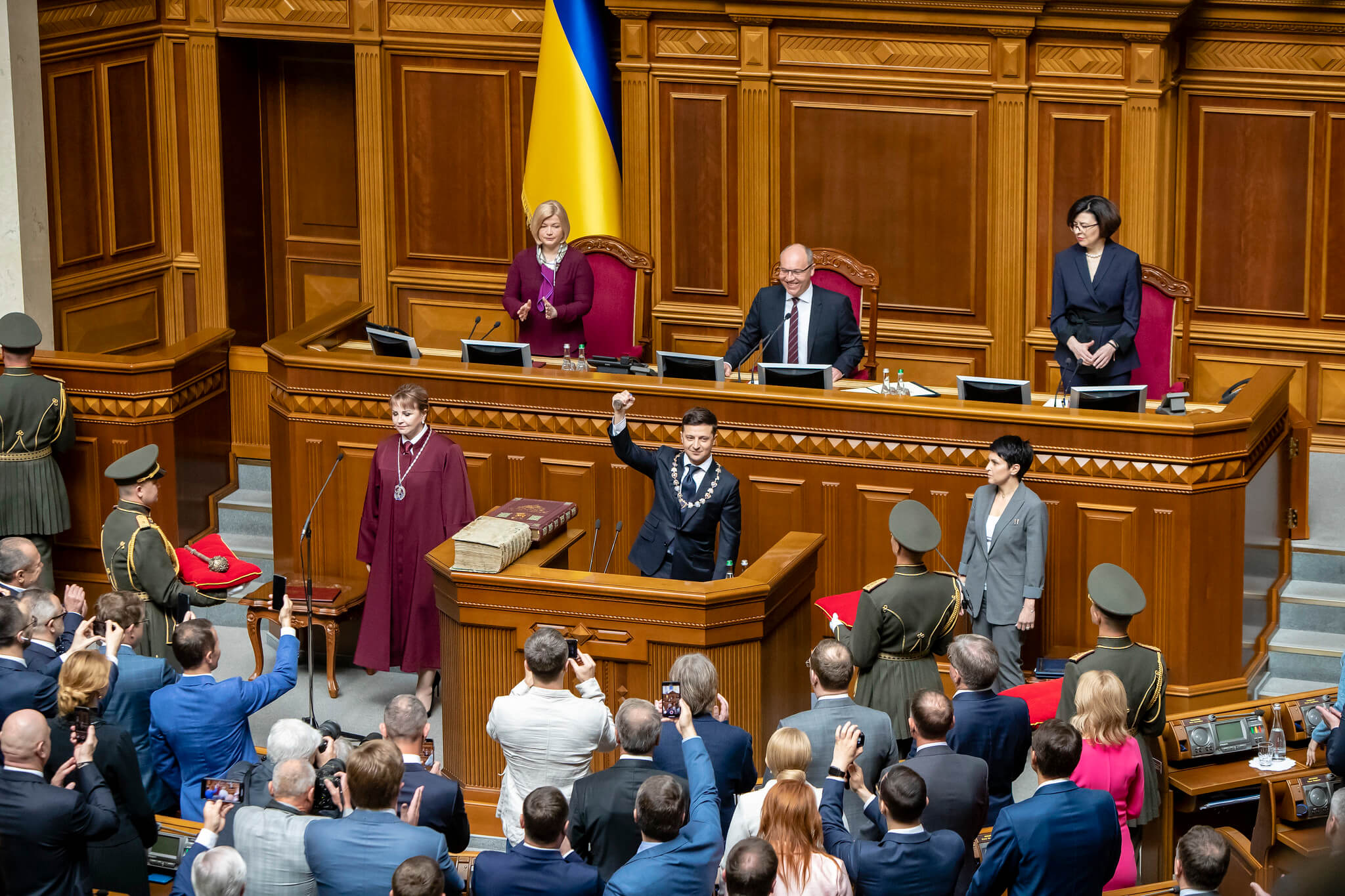
The lay of the land of ‘Europe’s forgotten war’
The conflict in Donbas, that erupted in 2014 when anti-Maidan protests in Donetsk and Luhansk provinces evolved into Russia-backed separatist movements, continues to rage on. Although frontlines have settled in the spring of 2015, active warfare persists on a regular basis.
An estimated 10,000 combatants from both sides have lost their lives since the outbreak of the conflict. The war takes a persistent toll on civilians, who are caught in the crossfire. In total, the conflict has taken more than 3,000 civilian lives, left up to 10,000 citizens injured and displaced some 1.5 million.2
With COVID-19 on the rise as well, a humanitarian crisis is looming
For those that live along the 427 kilometre long ‘contact line’, the humanitarian situation is especially dire. The regular shelling and the landmines scattered across the region pose obvious risks, yet local residents also lack basic needs, such as proper healthcare and access to drinkable water. With COVID-19 on the rise as well, a humanitarian crisis is looming.3
Meanwhile, conflict settlement in eastern Ukraine remains dependent on the Minsk agreements of September 2014 and February 2015.4 These agreements provide a roadmap to peace, prescribing demilitarisation of the region, restoration of Kyiv’s control of the Ukrainian-Russian border, local elections and a special status for the separatist-controlled regions.
The inherent difficulty of the Minsk agreements lies in the fact that neither signatory party can agree on the sequence in which to implement them, leaving negotiations essentially deadlocked.
A thaw in relations?
Since ‘Servant of the People’ Zelensky took office last year, a divergence in Kyiv’s approach to conflict settlement can be noticed.
Previous president of Ukraine Petro Poroshenko represented a fairly hard-line approach based on the primacy of security over political concessions, which translated into a focus on regaining control and demilitarisation of the separatist-controlled territories before anything else. In comparison, Zelensky seems more inclined to keep the door open, calling for internationally mediated talks and avoiding to explicitly call Russia an aggressor.5
The significance of the Paris summit lies less in its results and more in the displayed political commitment to negotiations
Exemplary of this shift was the revival of the Normandy Four talks last December. The talks, where Germany and France join Russia and Ukraine to discuss the war in Donbas, had been on pause since 2016.
The summit in Paris last December offered modest results, including agreements to disengage troops on three locations, expand the mandate of the Organisation for Security and Co-operation in Europe’s (OSCE) Special Monitoring Mission and establish a full ceasefire by 2020, while leaving key issues of border control and local elections in Donetsk and Luhansk unanswered.6 Still, the significance of this summit lies less in its results and more in the displayed political commitment to negotiations.
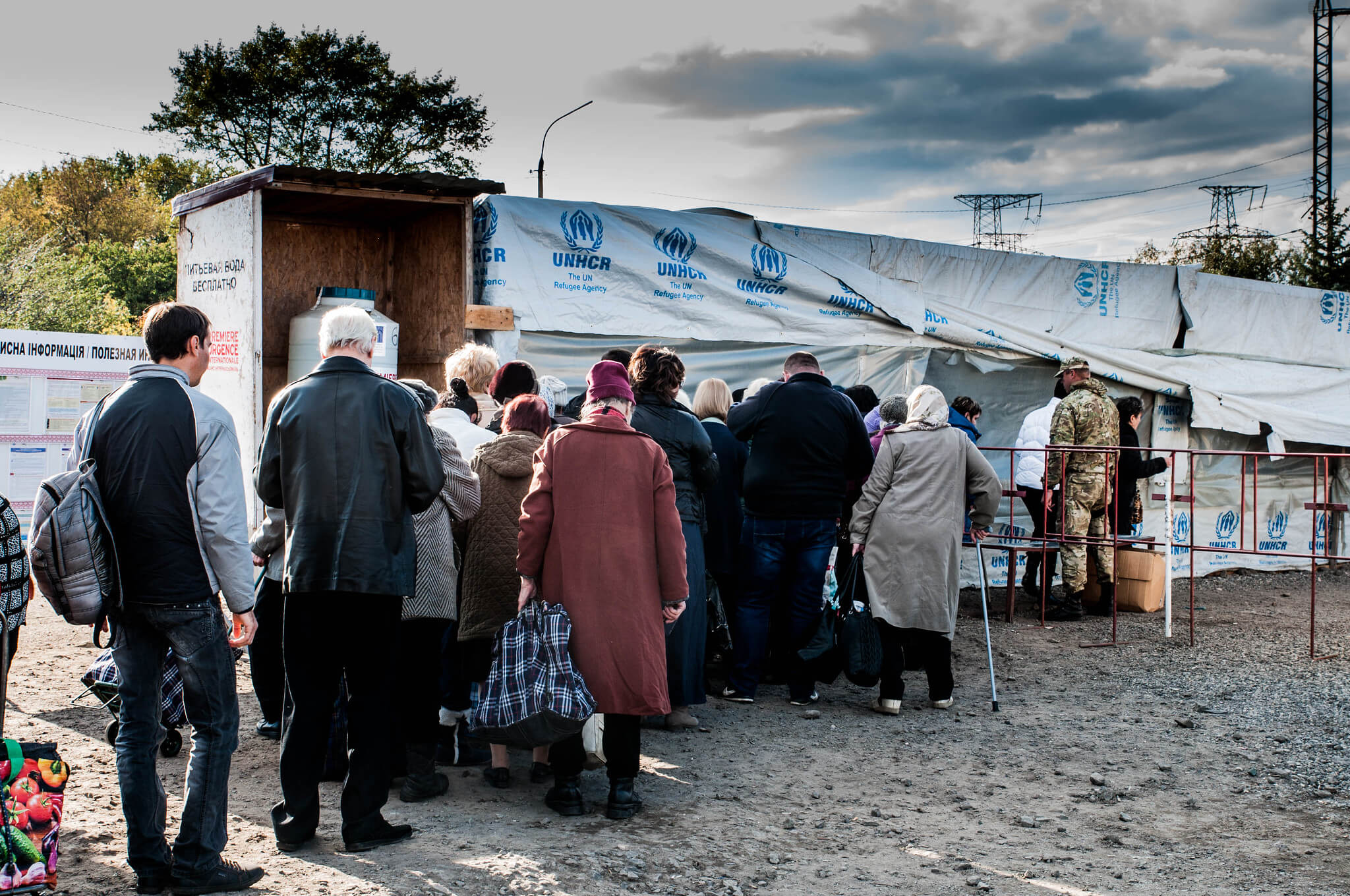
A second sign of purported rapprochement is a set of changes of senior positions in the government on both sides in February. In Kyiv, Chief of Staff Andriy Bohdan was replaced with Andriy Yermak, previously the president’s main Foreign Affairs advisor and an experienced negotiator, as special envoy in talks with Russia and the United States.
Meanwhile in Moscow, hardliner Vladislav Surkov was side-lined as main interlocutor in favour of Ukrainian-born Dmitry Kozak, who embodies a less controversial and more diplomatic presence.7 Although it is unlikely these changes will bring about a drastic change of course in negotiations, it does signify a willingness to change the pace by normalising dialogue.
Most significant is a preliminary agreement reached by the Trilateral Contact Group (Russia, Ukraine and the OSCE) in Minsk on March 11th, in which Yermak agreed to expand talks with representatives of the occupied territories beyond current working groups.
The agreement has since sparked unrest across Ukraine, as it places separatist leaders on equal footing with the Ukrainian government
It calls for the creation of a new Advisory Council that will feature officials from Ukraine and the Donetsk and Luhansk republics, while Russia shares the status of international observer with France, Germany and the OSCE.8 Created to facilitate the implementation of Minsk’s political aspects, the council intends to discuss matters of decentralisation and elections in the occupied zone.9
The agreement has since sparked unrest across Ukraine, as it places separatist leaders on equal footing with the Ukrainian government. Many view this as unacceptable because it disregards Russia’s military involvement and legitimises the Russian narrative that the Donbas conflict is a civil war.10
The short arm of the Kremlin
After all, Russia is hardly the benevolent observing party it claims to be. Though it adamantly denies its involvement in Donbas, it is generally accepted that the Kremlin has a strong grip on the reigns.
Since the Normandy Four summit in December 2019, there has been no progress in reaching a ceasefire and the OSCE’s observatory mission is continuously obstructed by armed forces.11 This suggests that Russia might not be that interested in actual conflict settlement.
Kyiv’s integration into the Euro-Atlantic community poses an explicit threat to Russia’s political and security interests
The rationale behind Russia’s involvement in Ukraine hinges on multiple factors. As the importance of Ukraine has never been lost on the Kremlin, Kyiv’s integration into the Euro-Atlantic community poses an explicit threat to Russia’s political and security interests.12
Moscow has a history of attempting to keep Kyiv within its geopolitical orbit. When the usual toolbox of covert actions and economic pressures, such as cheap energy supply, failed to do so, Russia turned to more serious measures.13
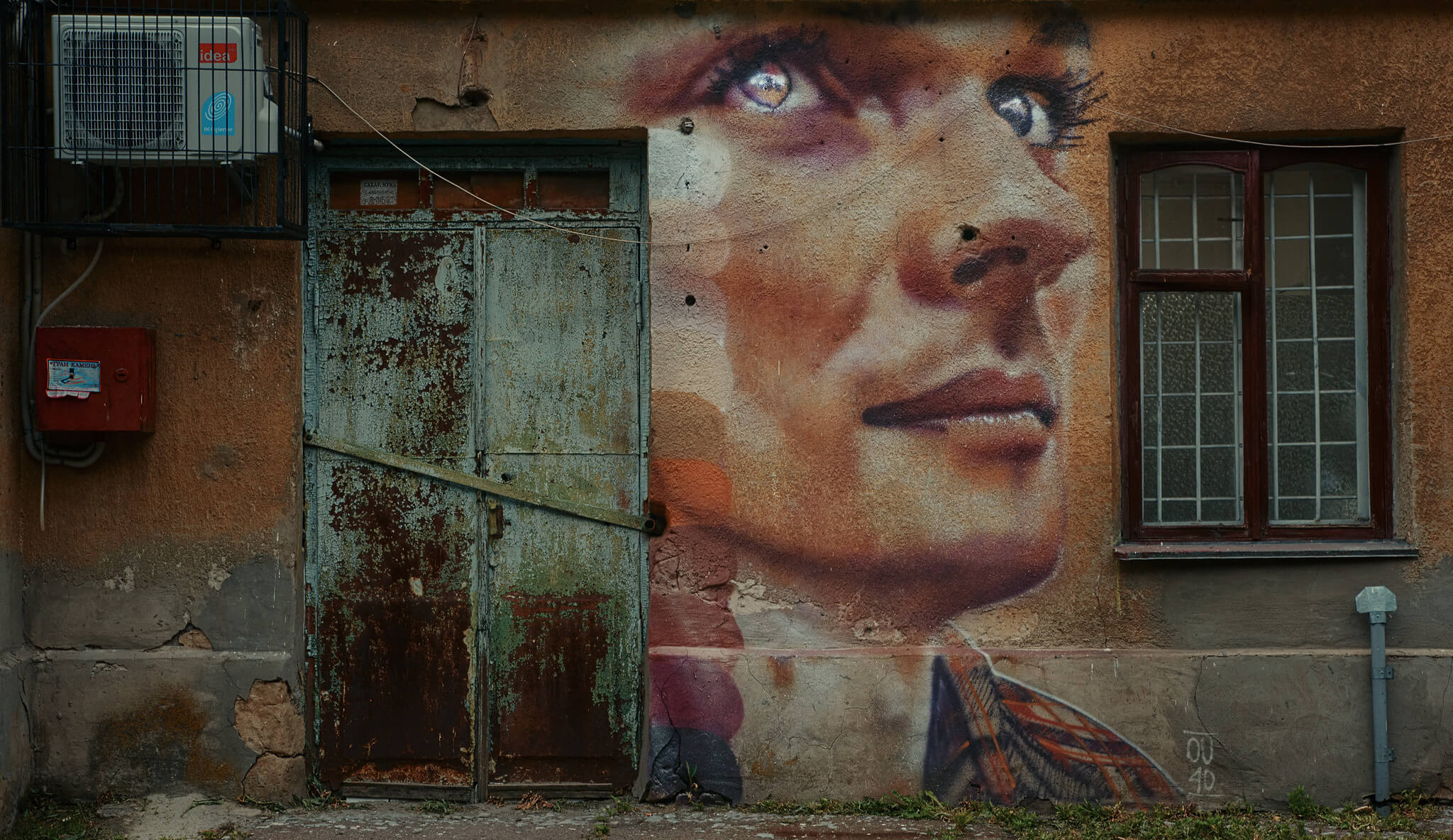
Moreover, Ukraine’s turn towards the West is threatening from a domestic perspective. Any neighbour distancing itself from the post-Soviet sphere sets a dangerous precedent in the Kremlin’s eyes, especially when it has such close cultural, linguistic and historical ties as Ukraine.
The success of the Euromaidan movement, combined with large protests across Russia in 2011 and 2012, enhanced Putin’s fear of regime instability at home. Besides preventing ‘Maidan in Moscow’, his actions in Ukraine could simultaneously allow for boosting political support among the Russian people.14
The conflict has proven to be rather costly
The main objective of Russia in Ukraine is thus simple: create a source of instability.15 The conflict in Donbas is a way to block Ukraine’s Euro-Atlantic integration by hampering economic development and damaging national morale, while also bolstering Putin’s regime at home with the comparison between its authoritarian stability and Ukraine’s turbulent democracy.
However, the conflict has proven to be rather costly. Russia is estimated to spend around six billion dollars annually on the Donbas and the international sanctions and counter-sanctions of 2014 continue to put a strain on economic growth.16
Now that its economy is struggling to cope with the additional shocks of COVID-19 and the drop in oil prices, the Kremlin is on the lookout for an easier way to reach its goal in Ukraine. A way to achieve this would be to federalise Ukraine and hold local elections in separatist-controlled Donbas, which would likely make it part of Ukraine on paper, but securely within the Russian sphere of influence in reality.
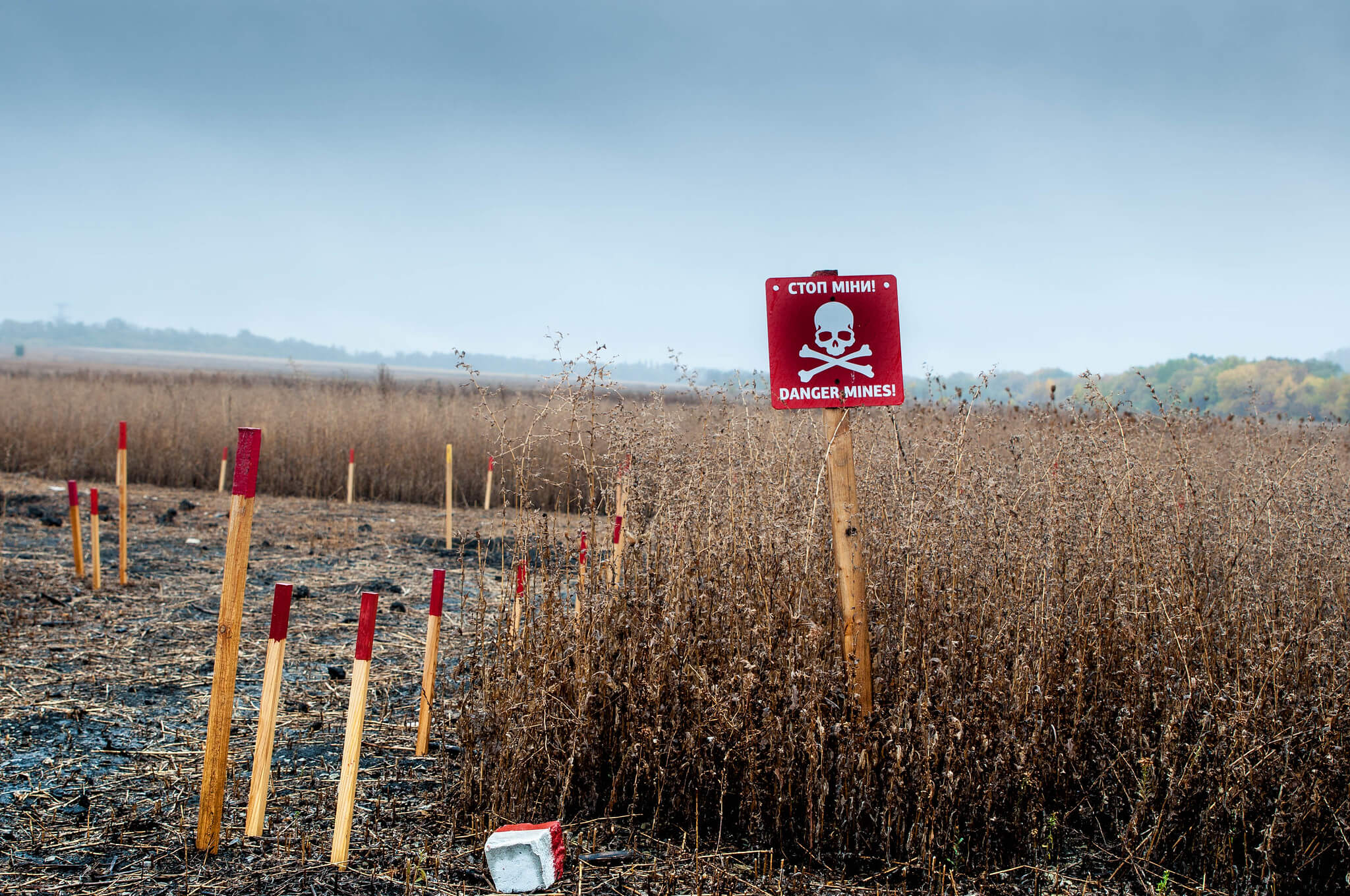
The minefield that is Ukrainian politics
Besides confronting a far-from-ideal neighbour, Zelensky has other groups to keep satisfied: his political allies and the population that elected him.
Much of Zelensky’s appeal as a political newcomer was based on the promise of a fresh start for Ukraine, through a transformation of its political and economic system. Now, that allure is evaporating fast. Recent polls have shown that the number of Ukrainians who believe the country is headed in the wrong direction has tripled since September 2019.17
In essence, Zelensky is facing the same problems that pushed Poroshenko out of the presidential office
While Zelensky has achieved some laudable accomplishments, such as the privatisation of many state-owned companies and opening up the country’s land market, other promises proved harder to keep.
The administration, for example, has less success in fighting Ukraine’s persistent corruption, which requires serious legal reforms.18 Furthermore, economic developments in 2019 have been decent, but prospects remain bleak due to lagging industrial production, lack of investment and the expected coronavirus recession.19
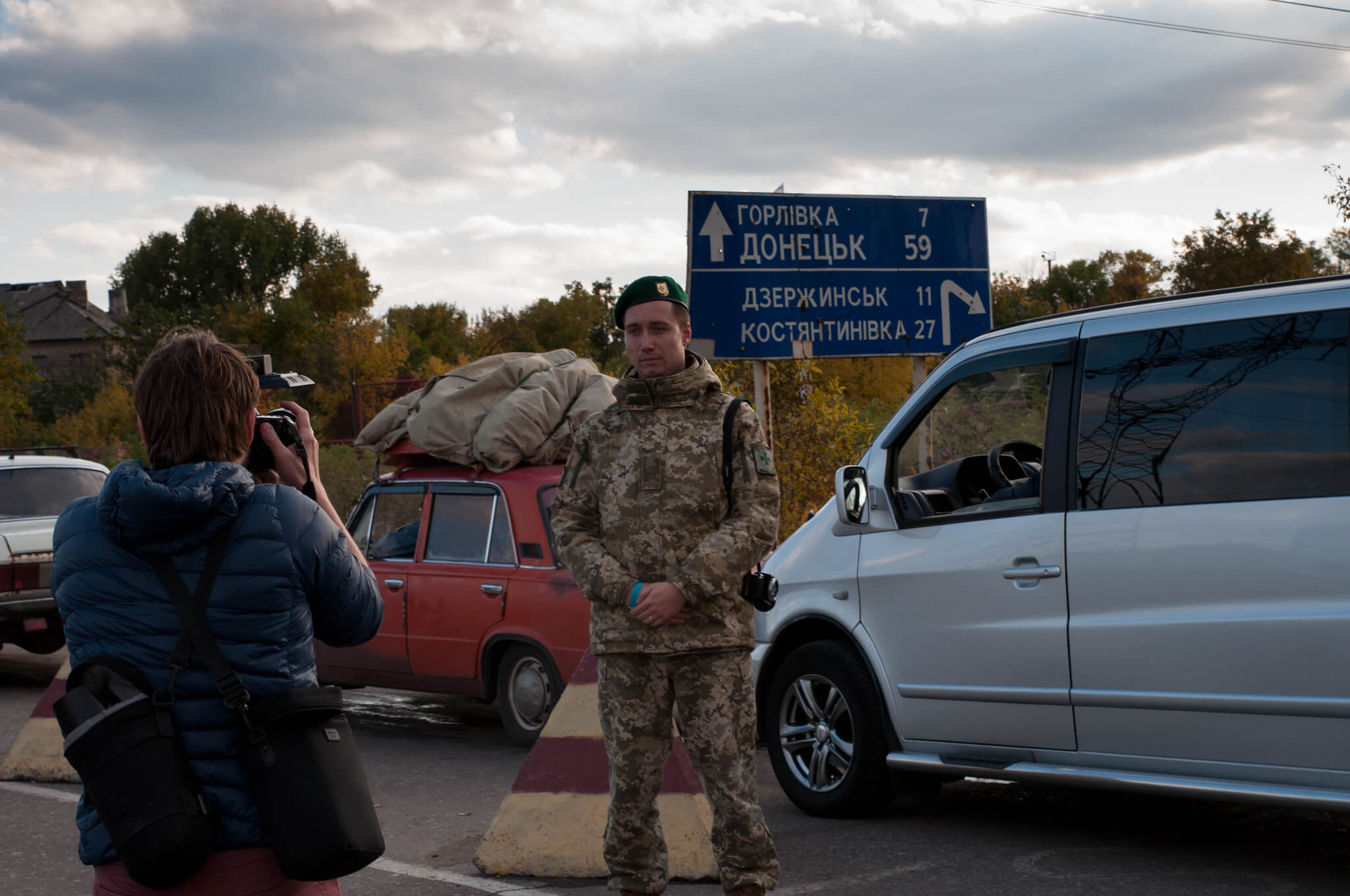
In essence, Zelensky is facing the same problems that pushed Poroshenko out of the presidential office, such as modest economic growth, rampant corruption and resistance to reforms. With the COVID-19 crisis and economic downturn on the horizon, Zelensky hopes a successful conflict settlement will give his popularity a boost.
This brings forward a conundrum, however, as Zelensky can no longer count on the full support of his party. Although he has control over both the executive and legislative branches on paper, his cabinet has not been without scandal and his party is currently racked by internal conflict.20
Any risk of Kyiv making concessions in negotiations is sure to evoke public outcry
Moreover, Ukraine has a vocal pluralist society. Any risk of Kyiv making concessions in negotiations is sure to evoke public outcry, since most Ukrainians are disenchanted with the prospects of conflict settlement and weary of Russia offering an olive branch.21
Accordingly, the plans for the Minsk Advisory Council were met with scrutiny. Although made public during the height of the COVID-19 pandemic – concealing it from major media attention – protesters gathered on the streets of Kyiv, members of Zelensky’s own party spoke out against the plans and other political parties denounced Yermak’s actions as treason.22
Going forward: prospects for settlement in Donbas during COVID-19
Conflict settlement in Donbas thus finds itself between a rock and a hard place. Zelensky’s administration is faced with political realities of Russian aggression and economic downturn while needing to keep the support of the Ukrainian electorate. Although more eager to find a compromise, Zelensky can ultimately only accept a solution that does not infringe on Ukrainian sovereignty.
Meanwhile, Russia’s strategic goals in Ukraine have not changed, meaning chances of it leaving on its own accord are scant. Instead, Moscow hides behind its civil war narrative and offers solutions on its own terms, knowing the Ukrainian president can never agree to them.
Prospects become more dire considering the international support Ukraine depends on. With support from the United States at risk of fragmenting,23 Ukraine is increasingly reliant on its European partners for support. Here, neither internal struggles within the European Union, Germany disengaging from the conflict, nor French President Emmanuel Macron actively propagating closer ties with Russia offers much comfort.
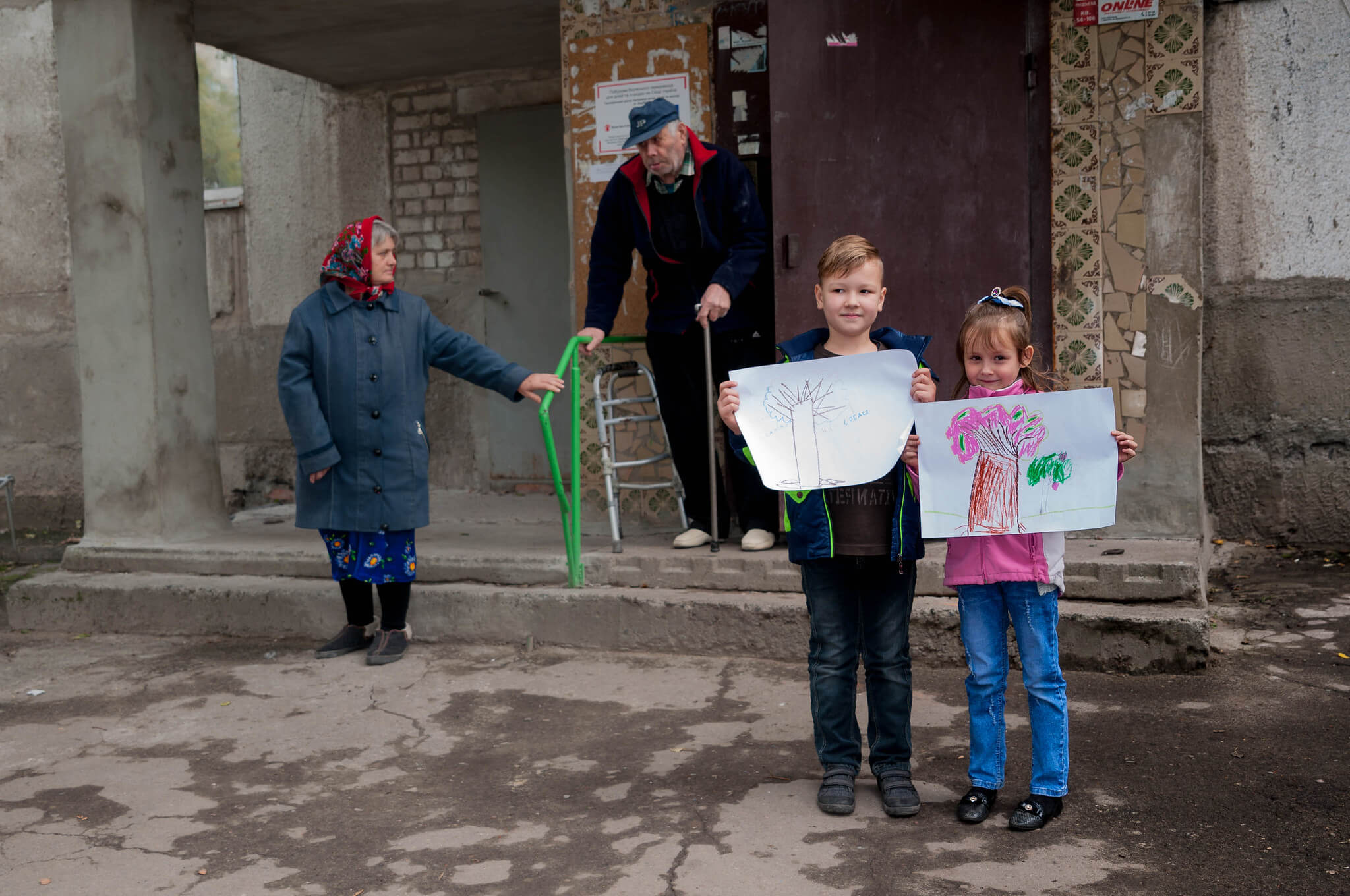
Current developments might offer an opening, however. The COVID-19 pandemic introduces massive economic pain on a global scale, Russia being no exception.24 The decrease in global energy demand has serious consequences for the Russian federal budget, which remains heavily reliant on gas and oil sales, and lockdown measures have turned down economic activity by a third.25
This economic downturn could open a diplomatic door. While there has not been a noticeable change in Russia’s posture towards Ukraine yet, economic hardship could necessitate a change in its strategy due to military budget cuts.26
Moreover, forecasts of serious economic contractions will send Moscow looking for ways to keep its economy afloat. Access to European financial markets and opportunities of foreign investment might incentivise Russia to seek closer cooperation with Western partners.
The idea of confrontation with Russia might be concerning for plenty Western policymakers, but an eternal conflict in Ukraine does not benefit Europe
This asks something of Western leaders, who need to realise that conflict settlement in Donbas hinges on their active involvement. An unstable Ukraine is detrimental to European security as a whole. The war also hampers Ukraine’s economic and political convergence with the EU.
The idea of confrontation with Russia might be concerning for plenty Western policymakers, but an eternal conflict in Ukraine does not benefit Europe. Its primary objective should be to support Ukrainian sovereignty by adhering to Ukraine’s interpretation of the Minsk agreements.
Still, this is uncharted territory; Donbas differs from other ‘frozen conflicts’ in the region and the coronavirus pandemic sets Russia’s economy back significantly. The current situation could present an opportunity to put pressure on the Kremlin to reconsider its current strategy. A fresh round of Normandy Four talks was tentatively scheduled for Spring 2020; its current status remains unknown due to COVID-19. The same, unfortunately, goes for the Donbas.
- 1‘Ukraine, Pro-Russia Separatists Hold First Prisoner Swap of 2020’, The Moscow Times, 16 April 2020.
- 2OHCHR, ‘Report on the human rights situation in Ukraine; 16 November 2019 to 15 February 2020’, 12 March 2020.
- 3Thomas de Waal, ‘Eastern Ukraine and Coronavirus’, in: Frances Z. Brown and Jarrett Blanc (ed.), Coronavirus in Conflict Zones: A Sobering Landscape, Carnegie Endowment for International Peace, 14 April 2020.
- 4The agreements were signed by Russia and Ukraine, overseen by France, Germany and the Organization for Security and Cooperation in Europe (OSCE).
- 5Pavel Polityuk and Maxim Rodionov, ‘Resume peace talks, Ukraine's Zelenskiy urges Putin after four soldiers killed’, Reuters, 7 August 2019; Kataryna Wolczuk and Hanna Shelest, ‘Could Zelenskyy’s Strategy for Donbas Lead Ukraine Into a Kremlin Trap?’, Chatham House, 14 February 2020.
- 6Ukraine Crisis Media Center, ‘Paris summit of the Normandy Four: Ukraine’s tactical wins’, 10 December 2019.
- 7Tom Balmforth and Natalia Zinets, ‘Senior appointments in Moscow and Kiev point to tentative thaw’, Reuters, 11 February 2020.
- 8UNIAN, ‘Media publish document signed in Minsk on March 11’, 13 March 2020.
- 9ZN.ua, ‘Novye minskie protokoly. Dokument’, 11 March 2020.
- 10Peter Dickinson, ‘Ukraine agrees to dialogue with Russian-led republics’, UkraineAlert, 14 March 2020.
- 11Organization for Security and Co-operation in Europe, ‘Status Report as of 18 May 2020’, 25 May 2020.
- 12Andrei Tsygankov, ‘Vladimir Putin's last stand: the sources of Russia's Ukraine policy’, Post-Soviet Affairs, vol. 31, no. 4: 279-303, February 2015.
- 13Licínia Simão, ‘The Ukrainian conflict in Russian foreign policy: Rethinking the interconnections between domestic and foreign policy strategies’, Small Wars & Insurgencies: Hybrid War in Post-Soviet Spaces, no. 27, vol. 3, 2016, 491-511.
- 14David Cadier and Margot Light, Russia's Foreign Policy: Ideas, Domestic Politics and External Relations, London: Palgrave Macmillan Limited, 2015, p. 213.
- 15Tatiana Stanovaya, ‘What the West Gets Wrong About Russia’s Intentions in Ukraine’, Carnegie Moscow Center, 11 December 2019.
- 16Mykhailo Pashkov, ‘The Price of Russia's "Might"’, Razumkov Centre, 15 June 2017; International Monetary Fund, ‘Russian Federation: 2019 Article IV Consultation-Press Release; staff report’, 2 August 2019.
- 17Razumkov Centre, ‘Otsinka gromadyanamy sytuatsiï v kraïni, riven’ doviry do vykonavchykh ta pravookhoronnykh organiv vlady otsinka diyal’nosti uryadu (lyutnyj 2020r.)’, 21 February 2020.
- 18Adrian Karatnycky and Alexander J. Motyl, ‘The End of Volodymyr Zelensky’s Honeymoon’, Foreign Policy, 26 February 2020.
- 19World Bank, ‘Fighting COVID-19: Europe and Central Asia Economic Update’, Spring 2020.
- 20Oleksiy Sorokin, ‘Party crashers: Internal divides crack Zelensky’s ruling party in parliament’, KyivPost, 4 May 2002.
- 21Georgi Gotev, ‘Thousands rally in Kyiv to protest the ‘Steinmeier formula’ for eastern Ukraine’, Euractiv, 7 October 2019; RFE/RL's Ukrainian Service, ‘In Kyiv, Crowd Lays Out 'Red Lines' For Zelenskiy Ahead Of Peace Talks’, RFE/RL, 8 December 2019.
- 22Andrew E. Kramer, ‘Anti-Russian Protests Erupt in Ukraine, Despite Virus Threat’, New York Times, 17 March 2020; Oleksiy Sorokin, ‘In controversial change, Ukraine to enter direct negotiations with Russian-led militants’, KyivPost, 13 March 2020.
- 23Steven Pifer, ‘Is bipartisan US support for Ukraine at risk?’, The Brookings Institution, 23 January 2020.
- 24A pessimistic forecast projects a 10% drop in Russian BBP in 2020. See: Ivan Tkachov, Julia Starostina and Yevgenia Chernyshova. ‘Èkonomisty dopustili padenie èkonomiki Rossii nizhe urovnya 2011 goda’, RBC, 10 April 2020.
- 25Jake Cordell, ‘Russia’s Economic Woes Continue to Mount During Coronavirus Outbreak’, The Moscow Times, 6 May 2020.
- 26Bob Deen, Mark Galeotti and Sabine Fischer, ‘The impact of Covid-19 on Russia’s politics and foreign policy’ [webinar], the Clingendael Institute, 26 May 2020.






0 Reacties
Reactie toevoegen